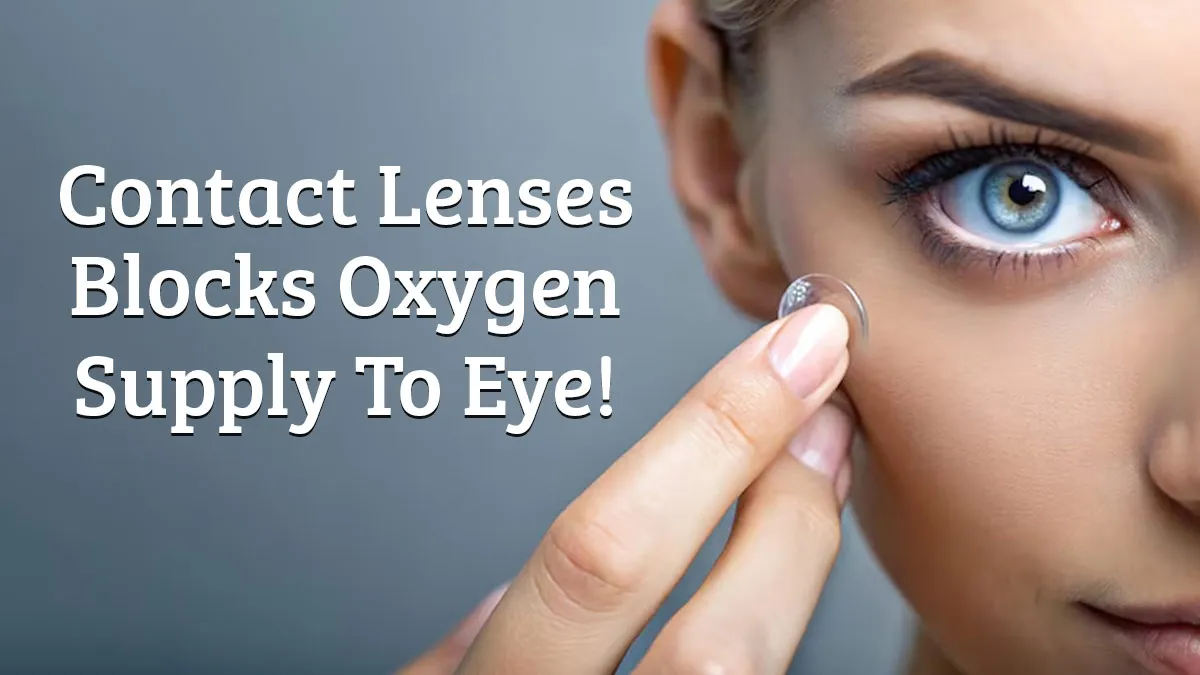
Contact lenses are a popular choice for vision correction, but many users don’t realise the hidden risks. They provide a wider field of view and are often preferred for active lifestyles and cosmetic reasons. However, the ease and comfort of contact lenses should not overshadow the potential risks associated with their use. Among many, one major danger is hypoxia, a lack of oxygen to the eye.
Table of Content:-
Detailing how it may affect the eye, a doctor explained the possible side effects of contact lenses that users must be aware of to ensure long-term eye health.
How Contact Lenses Block Oxygen Supply
According to a study published on PubMed, contact lenses, by their very nature, can impede the supply of oxygen to the cornea. The cornea, which is the structure at the front of the eye where a contact lens is placed, does not have blood vessels and relies on the surrounding air for its oxygen. Dr Rahil Chaudhary, Managing Director - Eye7Hospital, New Delhi, explained “It absorbs oxygen directly from the air. When you wear contact lenses, they act like a barrier, reducing oxygen flow. Over time, this can starve the cornea, leading to hypoxia.”
What is Hypoxia?
The expert explained that “Hypoxia weakens the eye’s defence system, making it prone to infections, swelling, or even permanent damage.” He further added, “If lenses are not cleaned properly, bacteria or dirt can stick to them.” This adds fuel to the fire: low oxygen + contamination = higher infection risk. In severe cases, it can cause painful ulcers on the cornea. These ulcers heal slowly and may scar your vision forever. Bacteria, oils, and dirt can further block oxygen flow when contact lenses are worn for too long.
Warning Signs Of Hypoxia
Ignoring the signs of Hypoxia can lead to corneal neovascularization, a condition where new blood vessels grow into the cornea to “rescue” oxygen-starved tissue. This can even cloud your vision permanently. Some of the trigger subtle warning signs are mentioned below:
- Redness
- Dryness
- Blurred vision
- Feeling like something’s in your eye
How It May Be More Dangerous For The Eyes

Dr Chaudhary detailed that not keeping contact lenses clean can be very risky. “If the lenses are dirty and you put them in your eyes, it can cause problems,” he said. Here are the key points:
- Low Oxygen Levels: Contact lenses reduce the oxygen supply to your eyes, which is already low when wearing them.
- Corneal Ulcers: A serious problem called corneal ulcers can develop from untreated infections. These ulcers are painful and take a long time to heal.
- Discomfort: People with these issues often feel uncomfortable and may have trouble seeing clearly.
ALSO READ: Khushi Kapoor Reveals Getting Eyebrows Nano-Bladed: Expert Shares How Long Do They Last
How to Prevent Eye Damage
The easiest way to prevent corneal hypoxia is by not wearing standard contact lenses for longer than recommended or overnight. Removing lenses at the first sign of irritation can also help. Switching to gas-permeable lenses, which allow more oxygen to reach the cornea, is another option. Some of the other ways are mentioned below.
- Limit wear time: Avoid sleeping in lenses.
- Clean daily: Use fresh solution—never water or saliva.
- Replace regularly: Follow expiry dates for lenses and cases.
- Check-ups: Visit your eye doctor yearly.
Conclusion
While contact lenses offer numerous benefits, it is essential to be aware of the potential negative effects, including corneal hypoxia. They are safe if used correctly. But cutting corners with hygiene or overuse invites hypoxia, infections, and vision loss. It is always advised to consult an eye specialist if you notice discomfort or vision changes.
Also watch this video
How we keep this article up to date:
We work with experts and keep a close eye on the latest in health and wellness. Whenever there is a new research or helpful information, we update our articles with accurate and useful advice.
Current Version